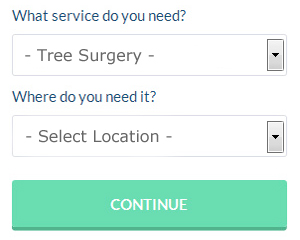Launceston Tree Surgeons (PL15): Trees are amazing things to have and enjoy in our gardens - they provide a much needed home for birds and wildlife, they offer welcome shade on hot, sunny days and they produce essential oxygen for our environment. But, to balance out the positive things about trees, there are also drawbacks. Trees can become diseased and unstable. Trees can get damaged by wind and gales. Trees can become too huge for our gardens in Launceston. When you're having problems with your trees in Launceston, the person to contact is a tree surgeon.
Playing an essential role in the maintenance and general care of trees, tree surgeons provide their expert services for both commercial and domestic customers in Launceston. There are many examples of services a professional tree surgeon in Launceston may be able to provide: felling, safe tree planting, inspections and hazard assessments, the pruning of intruding, dead or weak branches, as well as general tree maintenance.
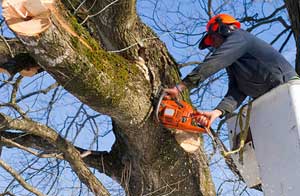
However, a tree surgeon's work certainly does not end with trees alone. Such tasks as shrub care, stump removal and hedge maintenance and pruning, are among the other duties of a tree surgeon in Launceston. If you've got a tree on your property in Launceston, and have got worries about its structural integrity, a tree surgeon is the right person to call, as they'll be able to examine your tree, give you a report on potential hazards, and give advice on what you should do next.
This is definitely a process that must only be completed by an expert, because tree surgery is an immensely dangerous task. Whilst avoiding the costs and choosing a DIY approach may appear tempting, this would certainly not be a sensible decision. To undertake the work that they do, tree surgeons have to be experienced, qualified and physically fit.
While hanging from a harness in a tree and high up in the air, tree surgery will normally require the use of dangerous power tools. It is most definitely not an activity for a beginner! Tree surgery work is also usually conducted by a team of seasoned tree surgeons, including climbers and a ground crew, who are all experts in their field. An untrained individual would find it nigh on impossible to execute the work with anything like this level of competence, experience and risk assessment.

Obtaining a decent tree surgeon in Launceston will be the initial step as soon as you've decided that you actually need one. But, how should this be done? Well, several things will have to be checked, for example what qualifications they have and how much it will cost. Below, we will be considering just some of the things that you should look for when picking a tree surgeon in Launceston.
Checking they have the necessary qualifications is the first step in dispelling any doubts that they are correctly accredited and competent. The governing body issuing qualifications to tree surgeons is the NPTC (National Proficiency Tests Council). Any competent Launceston tree surgeon should have the following qualifications as a bare minimum requirement:
- NPTC 206/306 (CS38) - Tree climbing & aerial rescue.
- NPTC 308 (CS39) - Aerial cutting of trees using free-fall techniques.
- NPTC 201/202 (CS30) - Chainsaw maintenance, on site preparation, and basic cross-cutting.
- NPTC 203 (CS31) - Fell and process small trees.
As gaining these certifications shows that they have received the proper training, it is worthwhile tracking down a tree surgeon in Launceston who has them, although surprisingly this is not currently a legal requirement. Gaining these qualifications should give you the peace of mind that the work will be completed in a safe and successful way. It is also crucial that some First Aid qualifications are held by forestry workers, tree surgeons and arborists, and they must always carry an appropriate First Aid kit in accordance with HSE workplace guidelines.
Getting a selection of quotations will be the next step, along with checking the breakdown of costs. It's advisable to obtain two or three price quotes from different tree surgeons in the Launceston area. One thing to look out for is whether the estimate includes the the disposal of the large amounts of waste typically created by tree maintenance and surgery, sometimes it won't! It's certainly easier to have the tree surgeons remove this waste themselves if you can, because getting rid of such waste can be very inconvenient and costly.
As well as this, make sure that you are ready to ask a number of important questions when you come face to face with the tree surgeon. For example, you need to ensure you know who is going to do the work. Will you be able to meet up with them before they start? Is it going to be one tree surgeon working alone, or will it be a team of arborists? Is there going to be any impact of my home or my neighbours? What tree removal or surgery techniques is going to be used? Exactly how long is the work going to take?
To avoid any nasty surprises down the road, ask lots of questions.
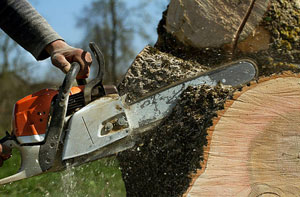
Finally, listen carefully to your tree surgeon. Pay special attention to the ways in which they describe the work they are intending to do, as this can give you clues about their level of knowledge and experience. If somebody is referring to 'lopping and topping', this is often associated with the more old-fashioned workers, who might not be up to date with modern technologies and techniques. A tree surgeon in Launceston who's fully trained, experienced and professional will employ more appropriate terminology like 'dead wooding', 'thinning', 'crown reduction', 'crown lifting' and 'pruning'. Whilst this can be a valuable clue regarding the level of experience held by your tree surgeon, it's not necessarily an indication of ability.
To summarise, when you have tree surgery or tree care needs in Launceston, it is always worthwhile to consult a number of tree surgeons. If you find the right one, you can count on having a professionally undertaken job, accounting for all possible hazards and ensuring all your requirements are fully catered to in a timely manner.
Local Launceston tree surgery services are most likely have the telephone code 01566 and the postcode PL15. They'll work in Launceston itself, in addition to nearby areas like Tregadillet, Dutson, Werrington, North Petherwin, Lanstephan, Stourscombe, Chillaton, South Petherwin, Newport, St Stephens, Lawhitton, Yeolmbridge, Liftondown, Truscot, Tinhay, Truro, Polson Bridge, and these postcodes: PL15 8HQ, PL15 0BX, PL15 7EJ, PL15 8DB, PL15 7BE, PL15 7FR, PL15 8HR, PL15 8HS, PL15 8DW, PL15 8DA. Checking this out can ensure that you access a local tree surgeon. Launceston property owners can utilise these and numerous other related services.
For this kind of service it is unquestionably better to hire a trusted local tree surgeon. Launceston home and property owners can substantially benefit from the skills and expertise that are the trademark of a trained professional.
Removal of Tree Stumps Launceston
When you have a tree cut down and removed from your property in Launceston, unless arranged with the tree surgery company, you'll be left with a stump to contend with. In certain circumstances it might be acceptable for you to simply leave the stump in position until such time as it rots away by itself. However, tree stumps in your garden can send out new suckers in an effort to regrow, and substantial tree stumps can take several years to break down, during which time they can become an eyesore, a dangerous trip hazard and the ideal hiding place for undesirable pests, bacteria and fungi.
There are various ways by which a large stump can be removed, if you decide that this is the best plan of action, though the 2 main choices are stump grinding and stump removal. Below we will be investigating the stump removal option.
Chemical treatment, burning or digging out by hand, are the three main methods of removing a tree stump. If your intention is to undertake the stump removal by yourself, any one of these techniques could be an option. Tree surgeons themselves will typically recommend the previously mentioned stump grinding solution, though might offer the alternative of a chemical treatment such as eco-plugging.
Chemical Stump Killers: For chemically removing a stump you'll need to invest in Resolva Xtra Tough Tree Stump Killer, Roundup Tree Stump Remover or Vitax SBK Stump Killer. Always study and follow the manufacturer's directions closely for timings, applications and quantities for these chemical substances, and bear in mind that they're toxic and oftentimes flammable. Your stump will take quite a few weeks to rot and can then be removed with an axe and a spade.
Tree Stump Burning: Burning a stump isn't normally recommended, and may contravene local laws, so take care if using this method. It comprises drilling a few one inch holes into the stump and continuously filling the holes with vegetable oil and left to sit for aa few days. You can then pile charcoal up around the stump and set fire to it. This shouldn't ever be left to its own devices, and be monitored constantly. When the fire has burnt out, you must make certain that it's extinguished and cool, after which you will be able to manually dig out the stump remains and roots.
There are also other stump burning techniques, such as digging a hole under the stump and setting a log or charcoal fire in the excavated root bowl. None of these burning solutions should ever be used if the tree stump is in close proximity to fences, a building or other trees.
Hand Stump Digging: The strategy for digging out by hand is reasonably straightforward, and calls for digging out as much of the earth as you can from around the base and roots, cutting any main roots with a chainsaw, and ultimately freeing up the stump so that it can be hoisted out and removed. A cable ratchet winch might be required in order to complete this procedure. This type of work is not for the unfit or faint-hearted, because it's tiring and tedious.
Health and Safety

One of the primary challenges with tree surgery in Launceston is the safety aspect, since it is a risky and dangerous undertaking if conducted incorrectly. If the so called tradesmen carrying out the tree surgery are unqualified or inexperienced, there are a great many factors that can easily lead to disaster such as falling branches and timber, not cordoning off the work area to protect vehicles and the general public, not using eye or hearing protection, hardly any protection from falling, in the form of ropes, platforms and harnesses, failing to use cut resistant clothing (particularly trousers and boots) and inadequate head protection. Because of this form of incompetence, possibly vulnerable are vehicles, the building structure within the property, the home owners, the tree surgeon himself (person climbing the tree), the actual tree, pedestrians, the street facilities, workers on the ground, garden features and fences.
The International Society of Arboriculture (ISA)
Based in Atlanta, GA, United States, the International Society of Arboriculture, generally referred to as simply the ISA is an international, non-profit organisation that fosters the benefits and awareness of trees. Providing qualifications for tree care professionals all over the world, the ISA is a membership association that upholds the professional practice of arboriculture.
With its focus closely on research, technology and education, the ISA encourages best tree care practice through educational publications, services and events, enabling individuals in the tree care industry to develop their skills, knowledge and arboricultural expertise.
An agreement signed in mid-2016 between the International Society of Arboriculture and the United Kingdom's Arboricultural Association, saw the AA become an associate organisation of the ISA. This strengthened the relationship between the two bodies and offered additional opportunities for ISA members in the UK and Ireland. Arboricultural Association members in the UK and Ireland now benefit from being part of a global network of tree care professionals. The International Society of Arboriculture now has professional affiliates and associate organisations in EXTRAtree pest control, tree maintenance, tree felling, crown raising, emergency tree surgery Launceston, tree topping, removal of storm damaged trees, retrenchment pruning, damaged tree removal Launceston, tree lightening protection in Launceston, safety inspections in Launceston, tree planning, tree watering, residential tree surgery in Launceston, landscape clearing, crown cleaning in Launceston, hedge lowering, brush cutting services, vegetation management, tree shaping, hazard assessment in Launceston, tree reduction in Launceston, root flare exposure in Launceston, shrub maintenance in Launceston, hedge trimming Launceston, tree replanting, arboriculture, terraventing Launceston, formative pruning, tree care, commercial tree care, tree cabling, stump treatment, air spading, tree managementTEN, and the United Kingdom, and has an international membership of more than twenty two thousand.
Eco-Plugging Launceston
If you'd like to remove a substantial tree stump from your garden in Launceston, the common procedure used by most local tree surgeons is called stump grinding, which employs large specialist machinery. There is however a more cost-effective solution to this problem these days, which is known as "eco-plugging", and it is growing in popularity. Eco-plugging isn't just less expensive, but it is also handy for use in hard-to-reach locations which are inaccessible to stump grinding machines.
Without affecting the surrounding vegetation and trees, eco-plugging is an exceptionally effective treatment for killing off tree stumps. Eco-plugs can be employed in any weather conditions and throughout the year, and they eliminate a tree stump by killing off the whole root system. Containing a form of granular glyphosate herbicide which is suitable for treating a wide selection of tree species, eco-plugs give good results in 95-100% of cases.
Ash Dieback (Hymenoscyphus Fraxineus)
First documented in Britain in 2021, ash dieback is a deadly fungal disease that's likely to decimate about 80% of the current ash tree stock, in the next few years. Having a similarly calamitous effect on the British countryside as Dutch Elm Disease (DED), ash dieback is just another huge setback for the UK's tree stocks.
The Fraxinus genus of trees is affected by this fatal disease, although it has a particularly devastating effect on Fraxinus excelsior (the European or common ash), which is the native British species. Originally coming from eastern Asia, the fungus which causes the disease is named Hymenoscyphus fraxineus.
Rapidly spread by spores which are able to be blown for miles on the wind, ash dieback (or chalara ash dieback) is prevalent in most regions of the British Isles with mortality rates of up to 85%.
Affecting tree of any age, ash dieback can be recognised by the following symptoms:
- Dark patches on leaves during the summertime.
- New growth appearing from previously dormant buds (epicormic growth).
- Leaves and new shoots that are dying during the growing season.
- Foliage that wilts, turns black in colour and falls prematurely.
- Dark brown necrotic lesions (often diamond shaped) form where limbs meet with the trunk, and the inner bark under the lesions looks brownish grey.
To some extent, ash trees have the ability to fend off the disease, however they ultimately succumb after continued attacks year-on-year. There's presently no cure for ash dieback, and no obvious method for stopping its spread.
Whilst you can report cases of ash dieback to the "Tree Alert Service" provided by the Forestry Commission, it's now so widespread right through the United Kingdom that they are really only interested in cases which are discovered in areas not previously affected. If you believe that you have a tree infected with ash dieback in your garden in Launceston, you must contact a local tree surgeon, who'll offer advice on how best to proceed - ultimately the tree will need to be cut down and removed.
Tree families affected: the Fraxinus genus (Fraxinus excelsior, EXTRAtree pest control, tree maintenance, tree felling, crown raising, emergency tree surgery Launceston, tree topping, removal of storm damaged trees, retrenchment pruning, damaged tree removal Launceston, tree lightening protection in Launceston, safety inspections in Launceston, tree planning, tree watering, residential tree surgery in Launceston, landscape clearing, crown cleaning in Launceston, hedge lowering, brush cutting services, vegetation management, tree shaping, hazard assessment in Launceston, tree reduction in Launceston, root flare exposure in Launceston, shrub maintenance in Launceston, hedge trimming Launceston, tree replanting, arboriculture, terraventing Launceston, formative pruning, tree care, commercial tree care, tree cabling, stump treatment, air spading, tree managementNINE).
(Tags: Identifying Ash Dieback, Ash Dieback Signs, Chalara Ash Dieback Launceston).Tree Cable Bracing Launceston
In particular circumstances where a tree is showing signs of decay, damage, or is a threat to nearby persons or property, a method called cable bracing can be used to give support to the tree. When older or valued trees in Launceston are involved, cable bracing is used where it's undesirable to fell a tree or cut out large portions that are unsafe or unstable.
To give additional support to weak limbs, V-shaped forks and poor joints in a tree, a purpose designed cable bracing system can be employed. Through the installation of cables and rods most tree surgeons in Launceston should be able to mitigate structural stress and prolong the life of old and valuable trees using different types of bracing work.
A non-invasive method, that doesn't cause damage to the tree (as is the case when drilling and bolting the problematic branches), cable bracing provides both shock-absorbing and flexible support. A risk assessment must be completed by a tree surgeon or arborist before any actual work can be undertaken. This is important to ensure the safety of the tree and adjacent areas as the project progresses. (Tags: Cable Bracing Methods Launceston, Cable Bracing Launceston, Cable Bracing Trees Launceston, Tree Cable Bracing Launceston).
Accidents Through Tree Surgery
As was mentioned earlier, the work that tree surgeons and tree care professionals in Launceston carry out, involves a considerable level of danger. When work is being done on trees, there is a clear risk of injuries to both operatives and passers-by, so all possible safety measures must be implemented.
As reported by the Health & Safety Executive (HSE), the vast majority of major and fatal injuries are linked to falls from trees, the use of chainsaws, and being struck by a falling branch or tree. The startling fact is that tree surgeons and arborists are more at risk of serious injury than those involved in the construction sector.
The most commonplace tree surgery accidents are falling from ladders, lifting injuries and being struck by objects (branches, cranes, ropes, trees, grapple hooks etc), when it comes to insurance claims.
This should all help you to understand why it is so crucial to hire a qualified tree surgeon in Launceston. Most accidents in the tree care industry can be attributed to unskilled workers trying to tackle tasks that they're not properly trained in. Using a trustworthy and established company that has been trading in the Launceston area for several years, is the easiest way to sidestep such problems, and get your tree surgery work done correctly and safely.
Crown Thinning Launceston
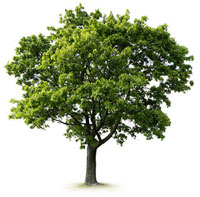
Taking out lesser live branches towards the outer part of the tree's crown, but not adjusting the shape or size of the tree, is generally called crown thinning. This approach is meant to create a uniform density of leaves, which itself accomplishes particular goals such as: to prevent the tree from being uprooted when it is windy, to lower the wind resistance of the tree, to lessen the overall weight of the crown of the tree, to lessen the stress on particular branches caused by snow, ice, gravity, or wind or to allow more sunlight to pass through. Crown thinning isn't supposed to change the general size and form of the tree, but needs to establish a uniform foliage thickness surrounding evenly distributed limbs.
Tree Transplanting Launceston
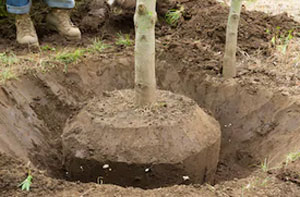
Moving fully developed trees is an intricate, yet rather straightforward process, mostly due to modern truck mounted tree spades, tree lifting equipment and other specialised tools. Fully-grown trees can be replanted on new ground to create an instant landscaping look, or out-of-control wooded areas can be thinned out without needing to turn to tree felling.
Transplanting a tree in Launceston can be done in any season of the year, but in the warmer months, soaking the ground becomes especially crucial in order to cause as little stress on the root system as possible. Removing an adult tree will involve a mechanical spade digging down and encompassing the root-ball, before lifting the entire tree, undamaged, from the ground. The uplifted tree is then ready to be transferred to its new home for transplanting, or held in temporary storage until it is ready to be replanted.
If you wish to move a tree from land that has a preservation order on it, a specialist tree moving company in Launceston can communicate with appropriate authorities to approve transplanting in an agreed location.
Tree Removal Launceston

Even while there are numerous reasons behind why you may wish to remove a tree from your property or garden in Launceston, tree removal should be a last resort. A lot of trees could even be protected by law, therefore you cannot get rid of them even though you want to, unless of course they are causing a threat to safety. Acceptable reasons behind removing a tree could be when your tree is damaged, your tree is in the way of new construction project, the roots are obstructing foundations/retaining walls, you've got a dying/dead tree, your tree has grown too large, your tree poses a safety hazard or the tree is infected.
Air-Spading Launceston
There are a number of factors that can have an impact on the overall health of trees in your garden, and the tree's root system is an obvious place to consider whenever you have cause for concern. A qualified Launceston tree surgeon may need to access a tree's roots to check for root rot, soil compaction, or other problems.
This was sometimes a tricky thing to achieve in the past, because while digging out the surrounding soil, the roots could be easily damaged. The system that most modern day tree surgeons use is known as "air spading", which is where compressed air is employed to break down and remove compacted soil without causing damage to tree roots or underground utilities.
The soil around tree roots can get compacted by construction work, passing vehicles or foot traffic, and this is known to have a negative impact on the general health of a tree. A tree can become "stressed" due to a lack of nutrients and water, which renders it more vulnerable to attacks by insects, pests and diseases. Air spading is also useful for resolving root flare problems, when the flare around the base of the stem becomes covered with too much soil, causing the tissue to break down, and increasing the possibility of root rot.
Directing air into the soil at a speed of 1200mph, the ingenious air-spading process necessitates the use of an air compressor and an air-spade which forces air into voids in the soil, causing it to break down instantly, but not affecting the tree roots or utility lines. As surrounding soil is blown away from the roots by the powerful air flow, immediate inspection can be accomplished. A solution can then be found for any any obvious problems, and the previously compact soil replaced with a looser layer of chip mulch and fertiliser to help encourage the tree to revive. (Tags: Air-Spading Launceston, Air-Spade Investigations Launceston, Air-Spade Launceston).
Wood Chipping Launceston

Since large amounts of vegetation, branches and tree limbs are the result of the tree surgery process, the majority of Launceston tree surgeons will utilise wood chipping machinery to reduce this material into manageable pieces. Swiftly gobbling up as much as 40 tons of material every hour, these powerful wood chipping systems can handle just about as much as you are physically able to feed into them. Even the smaller, more frequently used models can process a respectable five tonnes every hour without any issues.
Chopping down the branches in this way makes them much easier to transport and also generates a valuable by-product that can be used for a range of things including, cultivating mushrooms, ecosystem restoration, mulch for gardens, biomass solid fuel, wood pulp, garden pathways, weed prevention and landscaping.
The majority of tree surgeons in Launceston will be delighted to let you keep the wood chippings which have been generated during your tree work, if you have a use for them, otherwise they will normally take them away to use on other projects. Even when you do not require any tree surgery doing on your property in Launceston, tree surgeons are a reliable source for wood chippings which you can use throughout your garden. Wood chips are quite often available from tree surgeons for free, although if you need to have them delivered there will probably be a modest fee.
Wood chipping machinery is made by a number of companies, some of the best known brands include Timberwolf, T-Mech, Crytec and Forest Master.
Dutch Elm Disease
Devastating tree stocks and killing off millions of precious elm trees right through the UK over the last 50 years or more, Dutch Elm Disease (Ophiostoma novo-ulmi) is not so prevalent now, as it was previously. Inadvertently introduced into the United Kingdom, in infected elm logs imported from Canada in the 1960's, Dutch Elm Disease is caused by a fungus called Ophiostoma novo-ulmi which is spread by the elm bark beetle (particularly the Scolytus genus).
After arriving, it spread quickly through the nationwide movement of elm products such as elm crates, saplings, bark mulch, and logs with the bark on. Thought to have originally come from Asia (most likely Japan), DED did not just affect trees in the British Isles, but also devastated the stocks of elm trees in continental Europe, North America and New Zealand.
The first signs of Dutch Elm Disease are:
- Dark streaks under the bark of twigs.
- Affected shoots dying back from the tips.
- Twigs that turn into a "shepherd's crook" shape.
- Clusters of leaves turning yellow, wilting and falling.
It usually begins to appear in early summer.
Since there are now very few substantial elms in the UK countryside, the elm bark beetle's habitat has been pretty much removed, the result of which has been a slowing of DED. The propagation of young elms that are resistant to Dutch Elm Disease is a continuing project.
If you have suspicions that you might have infected elm trees on your property in Launceston, you can request a diagnosis from the Tree Health Diagnostic and Advisory Service (THDAS), or speak to your local tree surgeon for help and advice.
Trees affected - Ulmus and Zelkova.
Vectors - small beetles of the Scolytus genus.
Cause - fungi Ophiostoma Ulmi and Ophiostoma Novo-Ulmi.
Coming Soon: Tree pruning Launceston.
Leaving a Review
These days, the difference between a local Launceston business gaining potential customers or seeing them go to a competitor, is having glowing online reviews and testimonials. If the tree surgeon you hired provided a high quality service, you ought to repay their endeavours by leaving an enthusiastic review. Sharing your personal knowledge in this manner can benefit both the company itself and any possible clients moving forward. When you were first looking to find someone to do your tree surgery, you should consider how your decision was ultimately swayed by negative or positive reviews. Even if a certain company website appeared to be impressive, in the absence of any decent feedback and reviews you may well have looked someplace else.

However, can you really trust the reviews that are prominently shown on a business's website? Were actual clients involved in writing these, or were they "made up" by a company employee in order to make them look better?
An excellent way to search for genuine and frank reviews is to look at the Google My Business reviews. This is the review website that is trusted by millions of people to determine company reputations, and can have an impact on their position in the search engines as well. The 2nd biggest review website for local companies in Launceston is Bing Places for Business, and this is undoubtedly the big rival to Google My Business. You can help to increase the profile of a company that successfully worked on your tree surgery project by posting an honest review on one or both of these websites, and while doing so establish an overview of the working standards and dependability that they exhibited. Equally as effective is leaving feedback on Twitter and Facebook relating to the company you want to endorse. A leading part of any small business's marketing and media promotions, such social media websites are a vital aspect of the review process. Adding your own review should go some way to strengthening their sales message, and can help others who are looking for services of a similar nature.
Even in these modern, high-tech times, an 'old school' hand-written thankyou letter is more than acceptable. These can be gathered together to create a review portfolio which is useful in one on one meetings with potential customers, put in a frame for display in receptions, or scanned and published on the business website. When you have composed your review, regardless which method you use, you will feel good in the knowledge that you did your bit to promote a small local business and help them to prosper and grow.
Tree Surgery Tasks Launceston

Launceston tree surgeons can generally help with tree pest control, tree maintenance, tree felling, crown raising, emergency tree surgery Launceston, tree topping, removal of storm damaged trees, retrenchment pruning, damaged tree removal Launceston, tree lightening protection in Launceston, safety inspections in Launceston, tree planning, tree watering, residential tree surgery in Launceston, landscape clearing, crown cleaning in Launceston, hedge lowering, brush cutting services, vegetation management, tree shaping, hazard assessment in Launceston, tree reduction in Launceston, root flare exposure in Launceston, shrub maintenance in Launceston, hedge trimming Launceston, tree replanting, arboriculture, terraventing Launceston, formative pruning, tree care, commercial tree care, tree cabling, stump treatment, air spading, tree management and other tree surgeon services in Launceston, Cornwall. Listed are just a small portion of the activities that are carried out by a local tree surgeon. Launceston specialists will keep you informed about their full range of services.
Latest Tree Surgery Projects
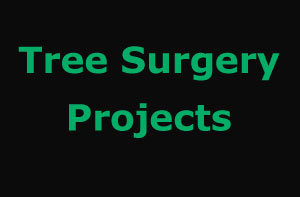
Ms Gia Bailey from Crowlas, Cornwall needs to find someone who can remove and ethically dispose of a thirty foot monkey puzzle tree. Miss Eden Tanner was in search of a tree surgeon who can chop down approximately 5 conifers with diameters of 150mm to 200mm in her garden in St Columb Major. Mr and Mrs Sharma are hunting for a tree specialist who will chop back a maple tree that's grown over into a next door neighbours gardenin their bungalow in Perranporth. In Wadebridge, Mateo and Ariella Glen are on the lookout for somebody who will do some shrub trimming and hedge cutting. Lacey Oldham was trying to find local tree surgeons near Probus. Mr and Mrs Karim need a tree surgeon in Feock, Cornwall who can totally remove a willow tree and a conifer, and chop back several other conifer trees. Harri Warden was trying to find somebody who can do tree surgery in St Goran, Cornwall. Miss Ava-Mae Flynn from Lanteglos, Cornwall needs to find somebody who is prepared to do some after winter tree and hedge pruning.
Tree Surgery Apprenticeships - Training - Courses Launceston

Having a job as a tree surgeon is a fulfilling and rewarding means by which to make a living. Options like being accepted into a tree surgery apprenticeship, applying for a college course, beginning at the bottom (perhaps as a groundworker) and working towards this goal, registering for a private course or taking a course in university are accessible to those wanting to be a tree surgeon. Applications for tree surgery apprenticeships in Launceston can be sent in while you are still attending school, when they are available locally. Individuals of all ages can enroll in college and private courses in tree surgery and they're offered throughout the UK. University courses cover various related sectors including woodland ecology & conservation, forest management, countryside management, arboriculture and forestry, with higher national diplomas, foundation degrees and degrees open to students with the appropriate qualifications (normally one to three "A" levels). If you don't fancy any of those solutions, you might opt to do some voluntary work so as to get a bit of practical tree care experience. You might try contacting the Forestry Commission, the Woodland Trust, the National Trust or the Tree Council, to discover what might be on offer in the Launceston and wider Cornwall area. I hope this short article has proved useful if you found your way here seeking info on "how to become a tree surgeon in Launceston". You can see far more guidance on how best to become a tree surgeon on the National Careers website.
Tree Surgeons Near Launceston: Also find: Lanstephan tree surgeons, St Stephens tree surgeons, Dutson tree surgeons, Chillaton tree surgeons, South Petherwin tree surgeons, Tinhay tree surgeons, Truscot tree surgeons, Liftondown tree surgeons, Lawhitton tree surgeons, Newport tree surgeons, Werrington tree surgeons, Tregadillet tree surgeons, Stourscombe tree surgeons, Polson Bridge tree surgeons, North Petherwin tree surgeons, Yeolmbridge tree surgeons, Truro here. All these places are serviced by a tree surgeon. Launceston home and property owners can get tree surgery price quotes by going here.
Cornwall Tree Surgeons
In Cornwall you'll also find: Pelynt tree care services, Budock tree care, Dobwalls tree care, St Enoder tree care, Callington tree surgeon, St Erth tree surgery, St Gennys tree care, Ludgvan tree surgeon, St Day tree surgeon, Portreath tree surgeons, Portreath tree surgeons, St Teath tree surgeon, Illogan tree management, Madron tree care, Hayle tree surgery, Mylor tree management, Mullion tree care, Mylor tree care, Crowlas tree management, Chacewater tree care services, Gerrans tree management, Lanner tree management, St Merryn tree management, Calstock tree management, Indian Queens tree care services, Grampound tree management, Sticker tree surgery, Mullion tree care services, Bugle tree surgeon, St Germans tree care. In every area of the Cornwall region you'll be able to locate tree surgeons who will offer you various services for your tree care needs. If you're unable to identify the ideal tree surgeon in Launceston itself then you should not have any problems locating a good one close by.
Tree Care Services Launceston
- Launceston Crown Lifting
- Launceston Tree Cutting
- Launceston Root Decompaction
- Launceston Tree Surveys
- Launceston Tree Watering
- Launceston Root Grinding
- Launceston Tree Shaping
- Launceston Crown Thinning
- Launceston Tree Felling
- Launceston Cable Bracing
- Launceston Dead Wooding
- Launceston Woodland Clearances
- Launceston Soil Terraventing
- Launceston Crown Raising
Tree Surgeons Around Launceston: People living in these Launceston roads recently enquired about a tree surgeon: Sheppy Street, Bourke Street, Dowling Street, Kilbys Lane, Launceston Court Lane, Ethel Street, Ingles Lane, Broadland Drive, Sherwins Avenue, Middle Street, Frankland Rise, Canning Street, Cleveland Street, Park Street, Edmund Street, William Street Lane, Law Street, Margaret Street, The Mall, Upton Street, Benders Lane, Church Street, Somerville Lane, French Street, Paterson Street, Tarleton Place, Smiths Lane, Boland Street, and also in these nearby postcodes PL15 8HQ, PL15 0BX, PL15 7EJ, PL15 8DB, PL15 7BE, PL15 7FR, PL15 8HR, PL15 8HS, PL15 8DW, PL15 8DA. These locations recently saw activity by a local tree surgeon. Launceston homeowners benefited from dependable and top quality tree surgery services on every occasion.
More Launceston Trades: Obviously, when you're having tree care carried out in Launceston, Cornwall, you'll probably need other garden related services, and apart from a tree surgeon in Launceston, Cornwall, you may also need landscaping in Launceston, garden design and planning in Launceston, patio layers in Launceston, rubbish removal in Launceston, garden shed installation in Launceston, fence fitters in Launceston, garden clearances in Launceston, SKIP HIRE in Launceston, garden pond builders in Launceston, artifical grass in Launceston, grass cutting in Launceston, weeding in Launceston, hedge clipping in Launceston, garden decking in Launceston, soil drainage services in Launceston, driveway specialists in Launceston, and other different Launceston tradespeople.
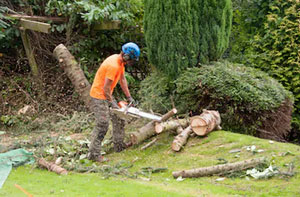 Tree Surgeon Launceston
Tree Surgeon Launceston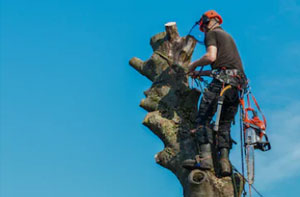 Tree Care Launceston
Tree Care Launceston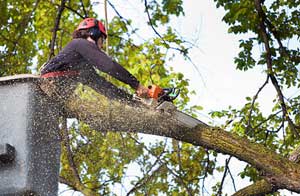 Tree Surgery Launceston
Tree Surgery LauncestonTree Surgeon Jobs Launceston: Find Launceston tree surgeon jobs here: Tree Surgeon Jobs Launceston
To read local Launceston information look here
More Cornwall Tree Surgeons: Cornwall tree surgeons: Falmouth, Launceston, Camborne, Penzance, Torpoint, St Austell, Saltash, Calstock, St Agnes, Wadebridge, Bodmin, Redruth, St Blazey, Looe, Hayle, Callington, Bude, Liskeard, Newquay, Truro, Helston and Penryn.
Tree Surgery PL15 area, and dialling code 01566.
More Trades: Gate Fitters - Gutter Cleaning - Tilers - Carpet Fitters - Carpenters
Crown Thinning Launceston - Forest Management Launceston - Tree Pruning Launceston - Tree Removal Launceston - Tree Surgery Launceston - Tree Care Launceston - Arboriculture Launceston - Stump Removal Launceston - Tree Surgeon Near Me





